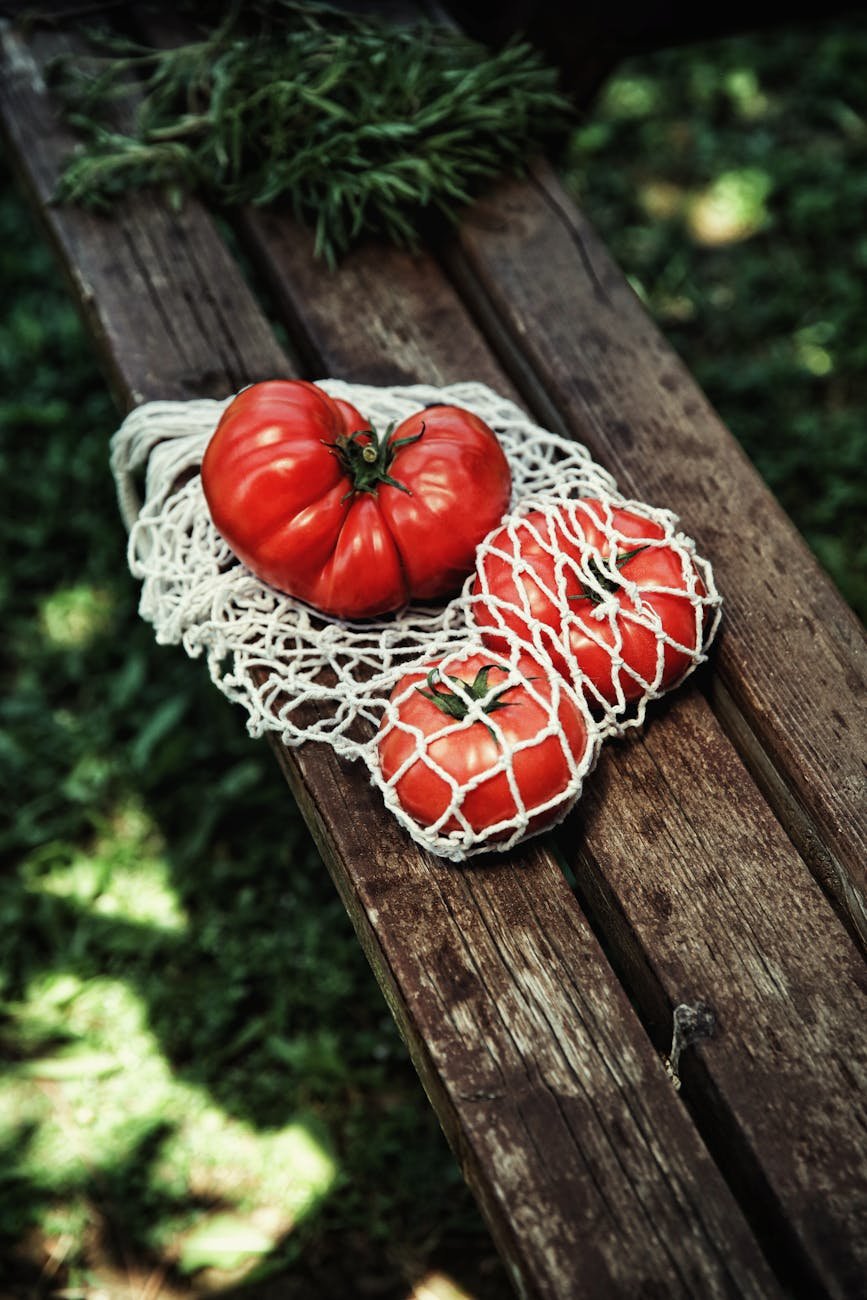Understanding Agriculture Marketing
Nailing it in agriculture marketing means knowing what makes farmers tick. Crafting strategies that speak directly to their needs helps agribusiness owners and marketing folks make campaigns that truly hit home.
Targeting Farmer Needs
Step one in rocking an agri-marketing campaign? Get your hands on solid market data. Knowing what keeps farmers up at night means you can pitch them products that actually solve their issues (DTN).
Focusing on their pain points not only helps build solutions that fit but also fine-tunes your customer chats. When you understand that farmers want gear that boosts efficiency, cuts costs, and sticks to eco-friendly practices, you’re ready to sell smart.
Market Segmentation Strategies
Breaking down the market into bite-sized pieces is a smart move in agriculture marketing. By sorting farmers based on certain traits, businesses can tailor-fit messages for each crowd. Here’s the lowdown:
| Segment Type | Description |
|---|---|
| Crop Type | Splitting veg growers from grain and fruit folks |
| Farm Size | Lump together small-timers and big operators |
| Geographic Location | Think about how climate and production shift with regions |
| Technology Adoption | Spot the tech geeks from the old-schoolers |
Focus your sales pitch and products on these groups, and watch those conversion rates climb up along with your return on investment (ROI) (DTN). Targeted messaging not only jazzes up marketing impact but also helps forge tighter bonds between businesses and their farmer clients.
Pulling in insights from agriculture market analysis and tapping into spot-on agriculture marketing channels can crank your marketing engine even further. This sharp strategy keeps agribusinesses in stride with the fast-paced and changing needs of farmers.
Making the Most of Data-Driven Marketing
Data-driven marketing is vital for keeping agriculture marketing thriving. By being smart about reaching customers and crafting personalized messages, agriculture businesses can hit the mark with their audience.
All-Inclusive Strategy
An all-in-one marketing plan delivers the same message across a mixed bag of platforms. This is a winner for agriculture businesses as it opens doors to different farmer groups through various touchpoints like magazines, websites, ads, emails, and even good ol’ snail mail. Keeping the message the same everywhere helps people remember the brand and keeps them interested (DTN).
| Channel | What It Does |
|---|---|
| Print Ads | Spread the word, especially in local areas |
| Online Promotions | Reach a wide crowd, get noticed |
| Personal Selling | Build trust, meet specific farmer needs |
| Public Relations | Boost trustworthiness, make allies |
It’s all about finding out which channels work best and getting the most bang for your buck marketing-wise.
Messaging That Hits Home
Personalized messaging lets companies speak directly to what farmers care about most. By really digging into what makes farmers tick, agricultural marketers can develop campaigns that truly speak to their audience.
Research shows a link between what people think is important in food (like healthiness and sustainability) and the choices they make. Knowing this helps shape messages that catch the eye of those who care about the environment (Elsevier). Plus, getting familiar with different consumer backgrounds helps create content that hits home with both ‘organic’ and ‘traditional’ markets (Food Quality and Preference).
Using data smarts, agriculture folks can keep track of what clicks and tweak their messages for better outcomes continuously. Highlighting the perks of sustainable goods not only matches what today’s shoppers want but also shows the brand’s green commitment.
For a more comprehensive dive into agriculture marketing strategies, have a look at our pieces on agriculture marketing channels and agriculture market analysis. You’ll find insights to beef up your marketing game tailored to farmers’ wants.
Shifting Trends in Agricultural Marketing
Times are changing fast, and agricultural marketing is not exempt, influenced by the pandemic and how people’s tastes are shifting. If you’re in agribusiness, own a farm supply company, or head up marketing, it’s essential to keep your finger on the pulse of these trends. The stakes are high when connecting with farmers and hitting those sweet spots in sustainable agriculture marketing.
Impact of COVID-19
Let’s talk about COVID-19—it really shook up the way agriculture marketing works. As farms grappled with selling directly to folks when traditional avenues got choked, some were left with no choice but to toss out good produce, endangering their incomes. It was a wake-up call, shining a light on how fragile the old ways could be. This chaos nudged farmers towards exploring new ways to reach buyers (Jotform Blog).
Farmers pivoted sharply to adopt fresh marketing tactics, focusing on creating closer ties with buyers. Going straight to consumers isn’t just trendy—it’s almost a necessity to survive erratic markets. Lisa Held from Civil Eats argues that going digital could set farmers up for long-term wins if they play their cards right (Jotform Blog).
| Marketing Method | Pre-COVID-19 | Post-COVID-19 |
|---|---|---|
| Direct-to-Consumer Sales | Low | High |
| Online Sales Platforms | Limited | Expanded |
Direct-to-Consumer Strategies
People want to know where their food comes from, and they crave quality. That’s pushing the rise in direct-to-consumer strategies, giving farmers a chance to forge real bonds with buyers and build loyalty to their farm brands. Yet, it’s not all sunshine and daisies—tackling online business models and figuring shipping logistics can be tricky.
Farmers navigating this digital space need to shine online through dedicated websites and buzzing social media accounts. Doing so doesn’t just widen their audience; it also boosts their brand’s footprint. Marketing leads can pitch in by sharing savvy advice on agriculture marketing automation and agricultural branding strategies to iron out any wrinkles in the process.
As direct sales continue catching fire, agribusinesses must keep an ear to the ground on what consumers crave, tweaking their methods and staying on top of new waves in sustainable farming. The spotlight on eco-friendly and ethically-driven farming practices is more than a passing fad. It underlines the value of promoting agriculture product promotions that hit home with the green-minded buyers of today.
Sustainable Agriculture Market Insights
The sustainable agriculture scene is buzzing with change, thanks to folks who’re waking up to green practices, whiz-bang tech, and businesses eager to care for our planet. Let’s chew the fat on what’s brewing in this space and spotlight the head honchos paving the way.
Market Growth Trends
The sustainable agriculture gig was worth a cool $14.36 billion in 2023 and is set to swell to $35.82 billion by 2033. That’s a yearly growth rate hanging around 9.57% from 2023 to 2033. The market hones in on dishing out top-notch, safe grub while being kind to Mother Earth and giving farmers a fair shake (Spherical Insights).
Here’s why this market’s on a roll:
- More folks are wising up to what old-school farming is doing to our planet.
- There’s a shift towards munching on organic and local goodies.
- People want the lowdown on how their food gets from farm to fork.
- Tech hops like precision agri and smart sensors are jazzing up farming.
Peep the table below to see how the sustainable agriculture market’s slated to grow over the coming years:
| Year | Market Value (USD Billion) |
|---|---|
| 2023 | 14.36 |
| 2024 | 16.00 |
| 2025 | 18.00 |
| 2026 | 21.00 |
| 2027 | 24.00 |
| 2028 | 27.00 |
| 2029 | 30.00 |
| 2030 | 32.00 |
| 2031 | 34.00 |
| 2032 | 35.00 |
| 2033 | 35.82 |
Industry Leaders in Sustainable Agriculture
A pack of savvy players is steering sustainable agriculture, chucking serious cash into R&D to broaden horizons. Here’s the roll call of the frontrunners:
- Nature’s Path Foods
- Eden Foods
- Deere & Company
- Trimble Inc.
- AGCO Corporation
- AgJunction LLC
- Raven Industries
These companies are pouring investment into greener gears and ideas, cranking the growth wheel even faster. Their push for planet-friendly products aligns with folks hunting for goods that play nice with the environment (Spherical Insights).
Getting a grip on these market swings and tipping your hat to the big shots is a must for agri-entrepreneurs and marketing pros keen to tweak their game plans. Journey through our stash of insights on agriculture market analysis and vibe with agriculture marketing trends.
Consumer Awareness and Preferences
Surge in Green Product Demands
The buzz around sustainability has everyone thinking green, and it shows in what folks want to buy. More and more people are leaning toward eco-friendly products, ditching the old ways of buying stuff that’s not exactly good for Mother Earth. This shift is turbocharging the growth of sustainable farming. According to Spherical Insights, consumers are picking green options over the usual things more often.
This eco-wave is riding high on the changing values of groups like Millennials. Studies reveal that Millennials have a strong and clear view of what sustainability means in the food game. They love shopping in a way that’s good for the planet and makes sense socially (Sustainability). With these changes, businesses, especially those in agriculture, need to keep up. It means tweaking how they market their products to fit these new tastes.
| Demographic | Percentage Thinking About Sustainability |
|---|---|
| Millennials | 75% |
| Gen Zs | 70% |
| Gen Xers | 55% |
| Baby Boomers | 40% |
It’s smart for businesses to check out agriculture market trends to get a grip on what people want and craft plans that hit those marks.
Necessity of Open Food Production
These days, consumers want the lowdown on their food—from where it starts to how it ends up on their plates. This hunger for information is tied to worries about health, safety, and ethics in how food’s made. Research shows that how people feel about organic versus conventional products really matters, so it’s crucial to spell out farming practices clearly (Food Quality and Preference).
Being open means sharing the nitty-gritty about where food ingredients come from and how they’re processed. Agribusiness folks should think about highlighting branding tactics that showcase planet-friendly practices. It builds trust and keeps customers coming back.
| Things That Build Consumer Trust | Importance Score |
|---|---|
| Clear Labels and Certifications | 90% |
| Tracking Ingredients Back to the Source | 85% |
| Reputation of the Brand | 80% |
| Earth-Friendly Practices | 75% |
Staying open about production helps businesses click with shoppers, showing they’re serious about being sustainable. It lets buyers make smart choices and feel more connected to the stuff they bring home. For ideas on making transparency a key part of business, companies can check out marketing avenues in agriculture that put honest practices in the spotlight.
Technological Advancements in Sustainable Agriculture
Tech changes are really shaking things up for sustainable farming. Two biggies in this field are precision farming and using smart gadgets and data to get the job done.
Precision Agriculture
Precision farming, sometimes called satellite farming or site-specific crop management, is about making every inch of the farm count. Using cool stuff like sensors, drones, and satellite pictures, farmers can get the lowdown on what’s happening with their crops. This tech gives them the smarts to work out exactly where and what is needed in the field, cranking up crop yields and cutting down on harming the environment.
| Technology in Use | What It Does |
|---|---|
| Sensors | Keep track of soil moisture and nutrients |
| Drones | Snap photos for checking plant health |
| Satellite Imagery | Map the fields and predict yields |
Farmers turn to these gadgets like sensors and drones to keep their crops happy without throwing away resources. More folks are looking into these gadgets, which means businesses need to find clever ways to connect with farmers that need these hot farming tools. Get more deets in our article on precision agriculture marketing.
IoT Devices and Data Analytics
Smart farming gets even smarter with Internet of Things (IoT) gadgets that keep an eye on things and gather info right from the fields. There’s a lot these devices can do – track temperature, humidity, and soil stats, and shoot all this juice up to the cloud. Once the data’s in, advanced analytics come into play, spotting patterns, making the best use of resources, and giving farmers a leg up in predicting crop performance.
| IoT Gadget | What It Does |
|---|---|
| Soil Sensors | Keeps tabs on soil moisture and nutrients |
| Climate Monitors | Keeps track of weather vibes |
| Automated Irrigation | Smarter use of water |
By mixing IoT tech with number-crunching skills, farmers are calling the shots like never before, pushing the bounds of sustainable farming. Sure, the tech may still have a hefty price tag, but it’s getting easier on the wallet with better satellite tech popping up (EOS.com). Grabbing detailed info means better crops and more eco-friendly farming, a key theme for agricultural branding strategies.
These changes in farm tech are set to keep rolling, leading to new ways for marketers to mesh with farmers chasing after the next big thing.
Government Role in Promoting Sustainability
Governments are big players in pushing for greener farming through cash help and teaming up with partners. They cook up programs to make sure farmers go green, keeping agriculture strong for the long haul.
Financial Support for Sustainable Practices
When it comes to getting farmers on the green train, money talks. Governments pitch in by shelling out funds to back farmers in their sustainability quests. For instance, they throw grants at research promoting earth-friendly business methods. Take the Environmental Protection Agency (EPA), they’ve got schemes to help energy users and state folks to save some juice.
In several corners of the globe, agriculture departments roll out grant and loan programs for farmers. The United States Department of Agriculture (USDA) is into supporting small farmers, both at home and abroad, to grow more sustainably.
| Government Program | Purpose |
|---|---|
| EPA Programs | Help boost fuel efficiency and champion sustainable energy use. |
| USDA Programs | Give a hand to small farmers in adopting eco-friendly practices. |
These funds open doors for farm businesses to boost their green marketing game. By pouring cash into sustainable moves, they earn a badge of honor as guardians of our environment.
Partnerships for Sustainable Development
Teaming up is the name of the game between governments and big companies to pump up sustainable farming projects. Heavyweights often link arms with local governments to ensure they don’t just stick to the rules but also supercharge their green projects. Unilever’s team-up with governments around the map is a solid example, showing small-time farmers the ropes in modern farming and business stuff.
These alliances don’t just hand over resources and smarts to farmers, but they also weave a web of support that sparks innovation in sustainable farming. By working together, everyone shares tried-and-true methods, making green agriculture marketing more potent.
| Partnership Example | Objective |
|---|---|
| Unilever & Local Governments | School small farmers on cutting-edge farming techniques. |
| Government & Corporations | Pump up the impact of green initiatives. |
By stepping up with financial support and nurturing these collaborations, governments make a real splash in green farming promotion. Farm business bosses and marketing lead can lean on these programs to better tie in with farmers and widen their mark in the market. For more wisdom on killer marketing strategies, check out our take on agriculture market analysis and agriculture marketing channels.
Effective Agricultural Marketing Strategies
Sustainable agriculture marketing isn’t just about fancy buzzwords, it’s critical for agribusiness folks and farm supply peeps who want to really get in tight with farmers. This part digs into why chatting it up, being straight-up, and using a mix of marketing ways matter.
Communication and Transparency
Y’know, shooting the breeze effectively forms the backbone of a food system that ticks boxes for both farmers and the folks munching on their goods. Being open and clear when talking about how food is grown earns those trusty thumbs-up from consumers. It’s a mix of chatting at farmer’s markets, dropping posts on socials, or sprucing up a blog. More people are craving goodies that are local and green, so tapping into what they’re after is mission critical.
Now, being see-through about how stuff’s grown amps up trust with buyers. Agribusinesses gotta yak about their eco-friendly moves in a way that resonates. It’s like a conversation where you spill the beans on where stuff comes from, farming tricks, and what this means for Mother Nature. Storytelling that highlights real tales from farms can bolster buyer connections.
| Communication Method | Strengths | Challenges |
|---|---|---|
| Farmer’s Markets | Face-to-face chat, quick feedback | Doesn’t cover much ground |
| Social Media | Massive reach, chances to chat up | Can get a bit jumbled |
| Blogs | Spin stories, deeper dives | Needs constant updating |
Diversified Marketing Methods
Mixing up marketing moves is crucial to hitting the bullseye with varied slices of the agriculture crowd. Agribusinesses gotta dabble in different approaches to capture what different buyers are into, riding the waves of sustainable agriculture trends. Here’s some of the lineup:
Direct Sales: Getting straight to the customer means cutting out the middlemen and talking up those eco-friendly creds.
Wholesale: Slinging goods to businesses amps up reach, but you gotta get a handle on each partner’s quirks.
Online Sales: Platforms like Etsy or Amazon Handmade take your reach up a notch, helping cater to niche markets craving sustainable stuff. The downside? Sorting out the nitty-gritty of shipping and logistics.
Every marketing move packs its own goodies and downsides. Mixing these strategies gives businesses a leg up in standing out and meeting the sustainable craving of today’s buyers. For more nuggets on figuring out markets and nailing branding, dig into our reads on agriculture market analysis and agricultural branding strategies.



















